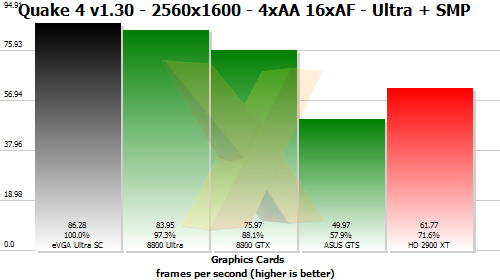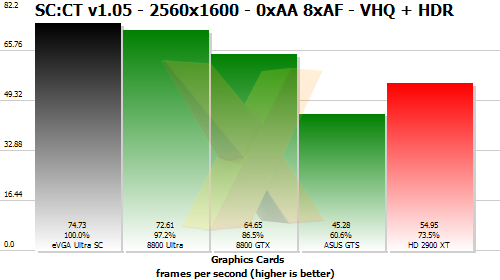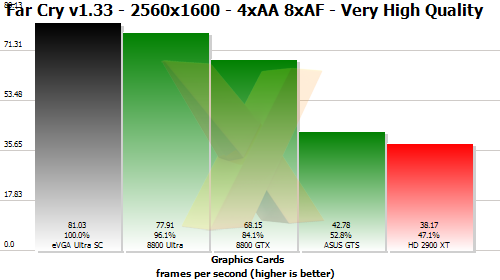Gaming results, HEXUS.bang4buck and overclocking
Here, we focus on the difference between reference and eVGA's Superclocked Ultras, to see what the clocks are buying you, so we can make a judgement on the value proposition eVGA is holding out there. Quake 4 first.
Quake 4

The graph above shows a couple of per cent or so difference in performance compared to the reference hardware - a bit less than expected given the clock differences. It pays to remember there's also the system-host platform to think about, plus the driver overhead and other things that might stop the hardware realising its theoretical advantages.
Splinter Cell: Chaos Theory

The eVGA board is ahead of the reference Ultra again but by a few percent at best. That indicates limits elsewhere, rather than issues with the hardware itself.
Far Cry

That's more like it, Far Cry lets the eVGA Superclocked Ultra stretch its legs versus the stock hardware. The difference compared to GTX, itself really fast hardware, will be pretty compelling for performance-junkies.
HEXUS.bang4buck
Refer back to the bang4buck calculation in our HD 2900 XT review and you'll see the Ultra, at £469, hit a mark of 0.58 or so. At ~£540 for the eVGA Superclocked variant, it's clearly not going to get a better score and, in fact, drops close to 0.5, if not below, had we benchmarked at 1920x1200 and plugged the numbers in.Over 15% more financial ask for the overclocked Ultras does not back up the real-world performance increase, reducing bang4buck significantly.









